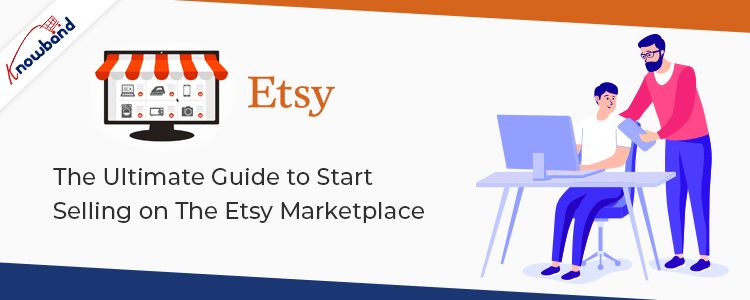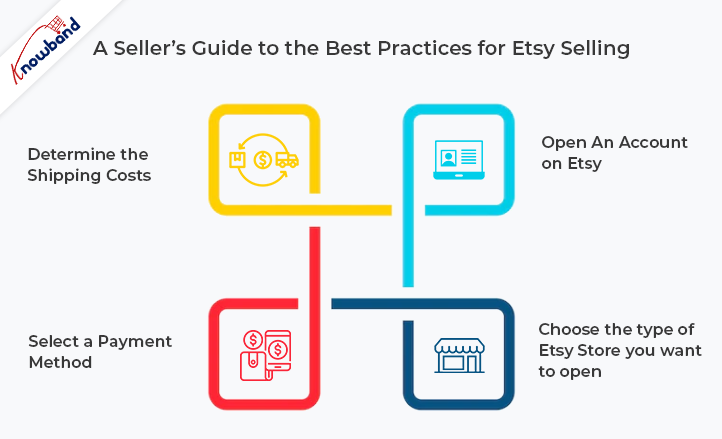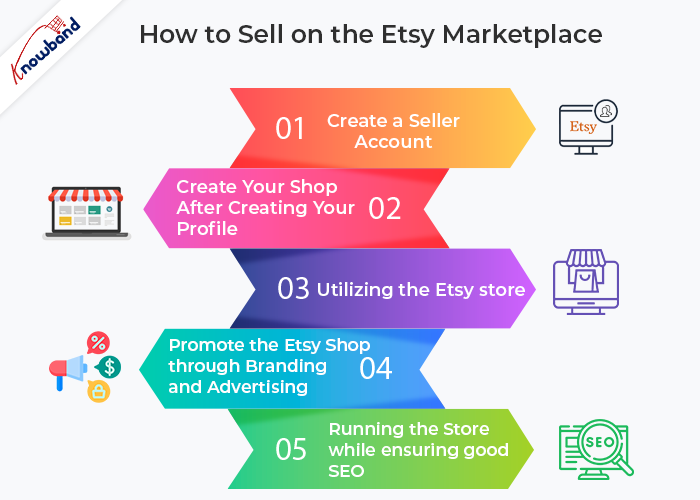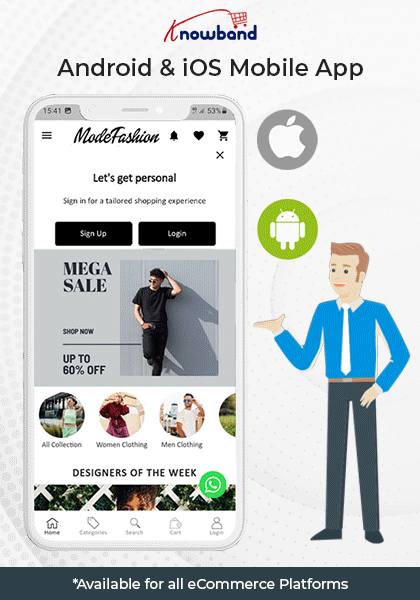The first term that springs to mind when we consider purchasing homemade goods online is Etsy. A professional seller community called Etsy Marketplace primarily focuses on handcrafted or vintage goods and craft-related products including jewelry, apparel, health and beauty products, and many others. Because the majority of the merchants listed on Etsy are small business owners, it can also be regarded as a C2C platform. One of the most well-known Marketplaces in the world is Etsy owing to the great purchasing experience.
Etsy’s ability to bring together these small-business vendors offering uncommon and unique items has helped it grow into a leading marketplace for arts and collectibles. When choosing unusual gifts, customers frequently seek Etsy for ideas, and many go there particularly to look for items that aren’t available on other online markets.
Among other e-commerce sites that focus on vintage or handcrafted goods, Etsy is one of the top global online marketplaces. For those aspiring sellers who are interested in selling on the Etsy Marketplace, this seller’s handbook provides a doorway.
Recommended Read: How to Sell on Etsy Marketplace?
Top-Selling Goods on Etsy Marketplace
A unique online store called Etsy focuses mostly on handmade, vintage, and custom-made products and supplies. It’s crucial to keep an eye on your products’ placement in search results if you want to sell something on Etsy.
Look at the top-selling items on Etsy Marketplace before we get started:
- Jewelry.
- Tools and supplies for clothing crafts.
- Baby and children.
- Old Things
- Personalized or homemade candies.
- decorations for a party.
- supplies for heat transfers and vinyl.
While a wide range of categories, including jewelry, purses, apparel, home décor and furniture, toys, art, as well as craft supplies, and tools, are among the top sellers on Etsy Marketplace.
A Seller’s Guide to the Best Practices for Etsy Selling
For those sellers who want to sell on Etsy or who are already Etsy Sellers, this guide is a good place to start. To speed up the selling process and increase profitability, it aims to answer all frequently asked questions. Registering to sell on Etsy is easy. To sell your products on Etsy, you must adhere to these three easy steps:
Open An Account on Etsy
The first step in using the website to sell items is to set up an Etsy account. You can do this by visiting the Etsy homepage, choosing Sell on Etsy, and then choosing Open Your Etsy Shop. You will be given instructions on how to configure the language, currency, and location of your store.
Choose the type of Etsy Store you want to open.
You must personalize your shop’s choices and settings after registering to choose how it will look and work on the website. Give your shop’s name, language, and location (country or region) in the first place.
Recommended Read: Success Formula for Etsy Sellers in 2022: A Beginner’s Guide
Select a Payment Method
After creating your Etsy store, you must choose the payment method you want to use and give Etsy your billing information so they can identify you and approve your transaction.
You can provide customers the option to buy from you and pay with either PayPal or Etsy Payments. The most popular payment method used by Etsy sellers is Etsy Payments, which is user-friendly and offers a variety of payment options.
Determine the Shipping Costs
When registering as a business on Etsy, establishing reasonable delivery costs is also essential. Think about things like if you’ll offer your products solely domestically or also worldwide to customers in various nations. In that case, remember to budget for various shipping costs, such as duty and shipment processing time.
So let’s continue to talk about How to Sell on the Etsy Marketplace:
Step 1: Create a Seller Account
Create an Etsy seller account first, read the Etsy policies, and decide whether the Etsy Marketplace is right for your company.
Following the creation of your Etsy account, sign up for a profile by providing your email address, username, and password. Alternatively, you can sign up directly through a social media account.
Step 2: Create Your Shop After Creating Your Profile
Select the “Sell on Etsy” option. After selecting this, you will be taken to your shop page, where you must now provide the following information:
- a) Preferences in Retail
- b) Give your business a name;
- c) stock it;
- d) decide on a payment method;
- e) establish billing;
Step 3: Utilizing the Etsy store
This part has several procedures where sellers must upload their store’s logo, cover photo, etc. Sellers must also update the business’s “About” section. Utilize the functionality of your shop’s segments to encourage customers to find and buy your products right away.
Step 4: Promote the Etsy Shop through Branding and Advertising
Making your brand shop popular on Etsy is incredibly crucial because opening an Etsy shop is not the end of the journey. The optimization of a seller’s shop information for Etsy Search should be checked. Sellers can go one step further and provide their store’s address so that customers in the area can find it. Sellers should concentrate on promoting their store through either free or paid advertisements. They might provide fantastic deals and discounts to their clients to encourage quick purchases.
Step 5: Running the Store while ensuring good SEO
After going over all of the aforementioned steps for Etsy’s Dealer Insurance Approach, sellers should make sure they comply with all the requirements. Sellers need to be familiar with Etsy’s survey methodology and have a plan for their first transaction.
Maintaining strong SEO is crucial for a successful online business on Etsy since it can boost website optimization and consumer engagement.
Sellers need to be aware of the following:
- How frequently do customers interact with your Etsy store?
- The opinions of your clients, whether favorable or unfavorable.
- Product Catalog
- High-quality inbound connections
Recommended Read: How to Launch a Marketplace like Etsy and Ebay?
Wrap Up!
Etsy is a global marketplace, to finish. Sellers who wish to profit financially from their skills and creativity can sell here. These artisans can sell their goods on Etsy Marketplace and make a significant portion of the proceeds. Additionally, they have the opportunity to reach a sizable portion of the global audience, which boosts your international sales as well.
For a variety of platforms, including PrestaShop, OpenCart, Magento 2, and WooCommerce, Knowband provides Etsy API Connector plugins. The KnowBand Etsy Integration module is also offering three months of free service. From the list below, select the proper Etsy integration module for your store: Prestashop, Opencart, Magento 2, and WooCommerce. The main benefit of the Etsy Integration is that it reduces the amount of manual work required to list products using a CSV file. Also, it is possible for the store administrator to swiftly and simply upload a substantial number of items to the Etsy marketplace.






